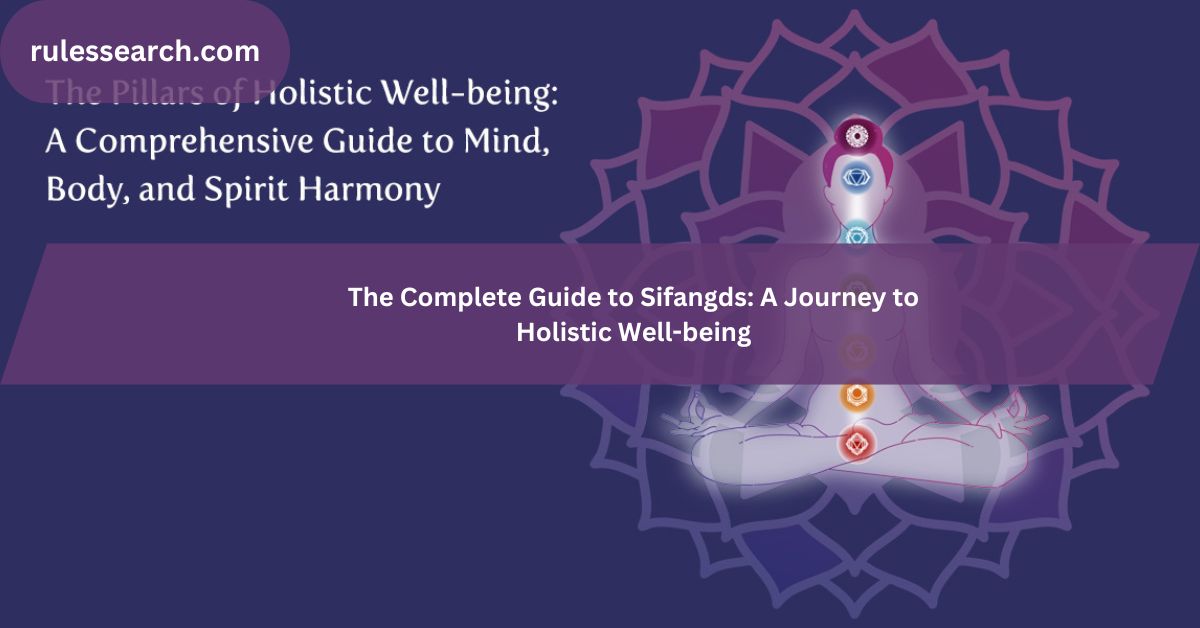Introduction to Sifangds
What is Sifangds?
Sifangds is a comprehensive discipline rooted in ancient traditions that combines movement, mindfulness, and cultural significance to promote overall well-being. Unlike conventional exercises that focus solely on physical fitness, Sifangds offers a holistic approach encompassing physical, mental, and spiritual health.
The Origins of Sifangds
Originating from ancient practices, Sifangds draws inspiration from various cultural traditions. These practices have been passed down through generations, each adding unique elements to the discipline. The fusion of these elements has created a modern practice that offers profound benefits.
The Core Principles of Sifangds
Movement
At its core, Sifangds involves a series of movements designed to improve flexibility, strength, and balance. These movements are often slow and deliberate, allowing practitioners to focus on form and mindfulness.
Mindfulness
Mindfulness is a critical component of Sifangds. Practitioners are encouraged to stay present during their practice, paying attention to their breath, movements, and the sensations in their body. This mindfulness can lead to a greater sense of inner peace and mental clarity.
Cultural Significance
Sifangds is deeply rooted in cultural traditions, each movement and practice carrying historical and cultural significance. Understanding these cultural elements can enhance the practice, providing a deeper connection to the discipline.
Health Benefits of Sifangds
Physical Health Benefits
1.Improved Flexibility:
The gentle stretching movements in Sifangds enhance flexibility, reducing the risk of injuries and improving overall mobility.
2.Increased Strength:
Regular practice builds muscle strength, particularly in the core, legs, and arms.
3.Better Balance:
The focus on slow, controlled movements helps improve balance and coordination.
4.Enhanced Cardiovascular Health:
While not as intense as traditional cardio exercises, Sifangds can improve heart health through consistent practice.
Mental Health Benefits
1.Reduced Stress:
The mindfulness component of Sifangds can significantly reduce stress levels, promoting a sense of calm and relaxation.
2.Improved Focus:
Regular practice enhances concentration and mental clarity, making it easier to focus on daily tasks.
3.Emotional Stability:
Sifangds encourages emotional regulation, helping practitioners manage their emotions more effectively.
Spiritual Health Benefits
1.Inner Peace:
The meditative aspects of Sifangds promote a deep sense of inner peace and tranquility.
2.Spiritual Connection:
Understanding the cultural and historical significance of the practice can enhance one’s spiritual connection and sense of purpose.
Practicing Sifangds: A Step-by-Step Guide
1.Find a Quiet Space:
Choose a quiet, comfortable space where you can practice without distractions.
2.Wear Comfortable Clothing:
Opt for loose, comfortable clothing that allows for free movement.
3.Set an Intention:
Before you begin, take a moment to set an intention for your practice. This could be anything from improving flexibility to finding inner peace.
Basic Movements
1.Warm-Up:
Start with a gentle warm-up to prepare your body for the practice. This could include light stretching and breathing exercises.
2.Core Movements:
Focus on the core movements of Sifangds, which are slow, deliberate, and mindful. Pay attention to your breath and the sensations in your body.
3.Cool Down:
Finish with a cool-down session to relax your muscles and mind.
Advanced Techniques
As you become more comfortable with the basic movements, you can explore advanced techniques that challenge your strength, flexibility, and mindfulness.
Sifangds in Daily Life
1.Morning Practice:
Start your day with a brief Sifangds session to wake up your body and mind.
2.Midday Break:
Use Sifangds as a midday break to relieve stress and refocus your energy.
3.Evening Wind-Down:
End your day with a calming Sifangds practice to promote relaxation and better sleep.
Sifangds and Diet
A balanced diet can enhance the benefits of Sifangds. Focus on whole foods, such as fruits, vegetables, lean proteins, and whole grains, to fuel your practice and support overall well-being.
Common Misconceptions about Sifangds
It’s Only for the Elderly
While Sifangds is popular among older adults due to its gentle nature, it is beneficial for people of all ages. The movements can be adapted to suit different fitness levels and needs.
It’s Not a Real Workout
Although Sifangds may not be as intense as some workouts, it provides numerous physical, mental, and spiritual benefits that can complement more vigorous exercises.
It’s Just Stretching
Sifangds is much more than stretching. It combines movement, mindfulness, and cultural significance to promote holistic well-being.
Conclusion: Embracing the Sifangds Lifestyle
Sifangds offers a unique and holistic approach to health, encompassing physical, mental, and spiritual well-being. By incorporating Sifangds into your daily routine, you can experience profound improvements in all areas of your life. This ancient discipline goes beyond traditional exercise, providing a comprehensive practice that nurtures the body, mind, and spirit.
The journey to well-being begins with a single step. Starting your Sifangds practice today can lead to discovering numerous benefits that enhance your overall quality of life. Embrace this holistic approach and allow it to transform your daily routine, promoting a balanced and fulfilling lifestyle.
FAQ’s:
1.What is the best time to practice Sifangds?
The best time to practice Sifangds is whenever it fits into your schedule. Many people find it beneficial to practice in the morning to start their day with mindfulness and energy, but any time of day can be suitable.
2.Do I need special equipment to practice Sifangds?
No, Sifangds requires no special equipment. All you need is a comfortable space where you can move freely.
3.How often should I practice Sifangds?
To experience the full benefits of Sifangds, aim to practice at least three to four times a week. Consistency is key to achieving long-term results.
4.Can Sifangds help with weight loss?
While Sifangds is not primarily a weight-loss exercise, it can support weight management by promoting overall physical activity and reducing stress, which can lead to healthier lifestyle choices.
5.Is Sifangds suitable for people with injuries?
Yes, Sifangds can be adapted to suit individuals with injuries or physical limitations. It’s always best to consult with a healthcare professional before starting any new exercise regimen.
6.How long does it take to see results from Sifangds?
The time it takes to see results from Sifangds varies from person to person. With regular practice, you may start to notice improvements in flexibility, strength, and mental clarity within a few weeks.
7.Can children practice Sifangds?
Yes, Sifangds is suitable for children. The gentle movements and focus on mindfulness can be beneficial for kids, helping them develop physical coordination and emotional regulation.
8.Is Sifangds a religious practice?
While Sifangds has spiritual elements and cultural significance, it is not inherently religious. People of all faiths and beliefs can practice Sifangds and benefit from its holistic approach to well-being.
9.Can I practice Sifangds if I’m pregnant?
Pregnant women can practice Sifangds with modifications. It’s important to consult with a healthcare provider to ensure that the movements are safe and appropriate for each stage of pregnancy.
10.Where can I learn more about Sifangds?
To learn more about Sifangds, you can seek out local classes, online tutorials, and books on the subject. Engaging with a community of practitioners can also provide valuable insights and support.
By embracing Sifangds, you can embark on a transformative journey toward holistic well-being. This comprehensive guide offers a detailed introduction to the practice, its benefits, and how to incorporate it into your daily life, helping you achieve a balanced and fulfilling lifestyle.



